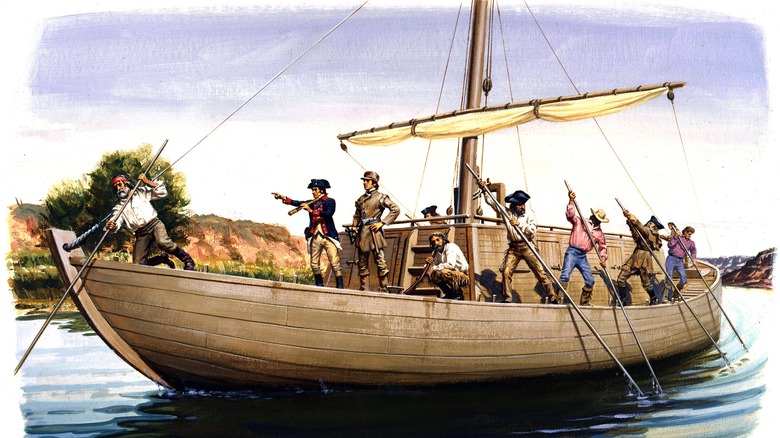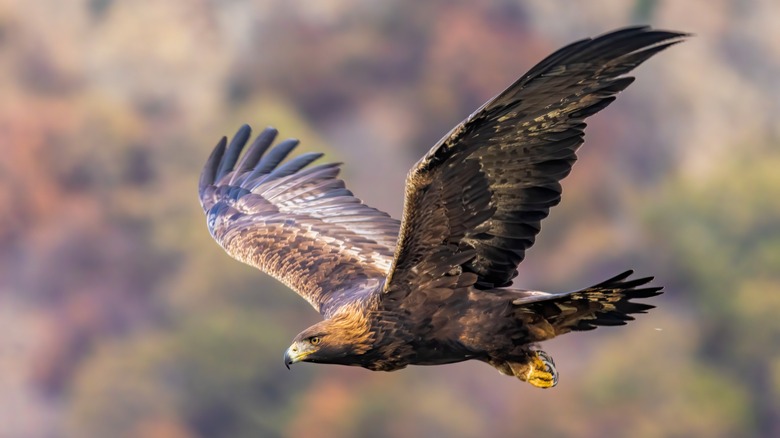Situated Between Yellowstone And Glacier National Park Is One Of The West's Best Stretches Of River
While North America has been gifted with some of the most magnificent natural spectacles on Earth, much of it seems to be concentrated in Montana. From the grandeur of Glacier National Park to the cold, crystalline waters of Flathead Lake, this big western state really delivers the goods when it comes to nature's wow factor.
Montana has so much to offer that some of its most jaw-dropping attractions can be overlooked. One such spot is Gates of the Mountains, a gorge on the mighty Missouri River featuring sheer, 1200-foot limestone cliffs that rise into the air like castle walls. Traveling through this canyon is like entering into the pages of an epic fantasy novel while also traversing the path of history.
The Lewis and Clark Expedition first made their way up the gorge in the summer of 1805 and were overwhelmed at the sight. In his journal, Meriweather Lewis wrote, "This evening we entered much the most remarkable clifts that we have yet seen. These clifts rise from the waters edge on either side perpendicularly... every object here wears a dark and gloomy aspect. The t(ow)ering and projecting rocks in many places seem ready to tumble on us." He went on to christen the awe-inducing canyon "the Gates of the Rocky Mountains" due to the fact that he considered it the entrance to the great range.
A glimpse into the heart of Montana
Located just 20 miles from the state capital, Helena, Gates of the Mountains is easy to access. The gorge itself occupies a nearly 6-mile stretch of water on the Missouri and is best experienced by taking a tour on one of two boats that operate out of a marina just three miles off of Interstate 15: the "Canyon Voyager" and the "Sacajawea."
During the two-hour cruise, visitors marvel at the stone rises boxing the river in on either side. Dams have turned the once-frothing river into a body of water more akin to a lake, which makes for easy sailing. Other than that, the dark and winding canyon remains almost exactly as it was when Lewis and Clark first laid their eyes on it.
As the boat cuts across the glassy surface of the river, cruise guests should keep their eyes open for wildlife in the air and on the cliffs, especially bald eagles, golden eagles, ospreys, mountain goats, and bighorn sheep, all of which are common in the region. If you're lucky, you may also catch a glimpse of deer, cougars, black bears, ermines, or otters. And while Lewis and Clark made "Gates of the Mountains" known to the greater world, the history of the canyon goes back much further. The area has long been inhabited by indigenous people, whose pictographs adorn the cliff walls and can be clearly seen from the water today.
A world beyond the river
While the gorge is the star of the show, Gates of the Mountain is more than just water slicing through rock. This stretch of the Missouri River is surrounded by 28,000 acres of raw nature ripe for exploration. The Gates of the Mountain Wilderness features 59 miles of hiking trails that can be enjoyed on foot, by bicycle, or on horseback.
One of the most popular routes is the Refrigerator Canyon Trail, a 9.1-mile-long path that heads through a narrow gorge that's cooled by a stream and strong breezes, hence the trail's name. It also offers some terrific viewpoints of Sheep Mountain and Candle Mountain, two 7,000-foot-plus peaks that are visible from the path.
The trail eventually winds through a wide meadow known as "Bear Prairie." This area is abundant with wildflowers and is known as a great place to spot big wildlife such as deer and mountain goats. After spending some time in Bear Prairie, you can drop down to the Missouri and hitch a ride back to civilization on one of the tour boats.
For more natural excursions in Big Sky country, check out the very underrated Makoshika State Park.


